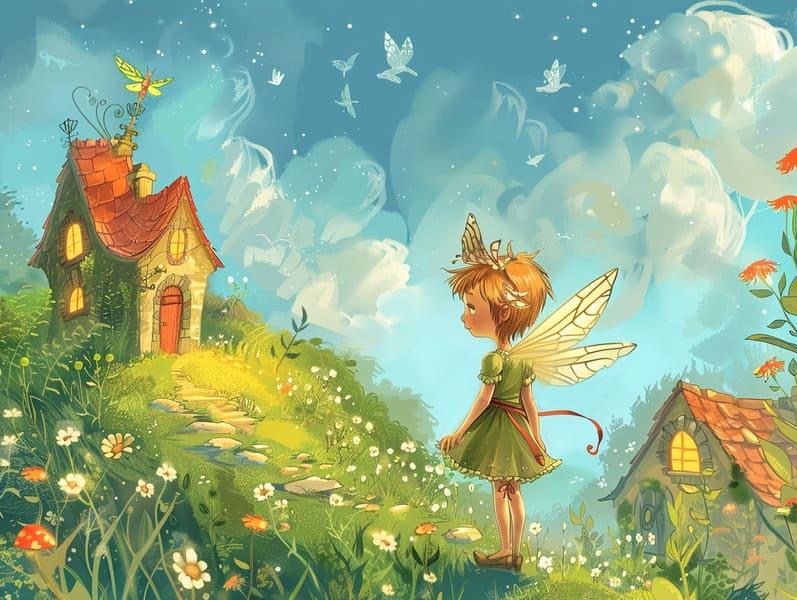Tracing the Heritage of Popular Fairy Tales with the Continued Attraction.
Tracing the Heritage of Popular Fairy Tales with the Continued Attraction.
Blog Article

Grimm's fairy tales have ancient roots. These narratives have been whispered from one generation to the next well before they were ever recorded. They came from a variety of societies, including European traditions. They were initially narrated among mature audiences, often carrying themes and messages reflective of the societal norms and beliefs of the time.
The renowned Brothers Grimm, Jacob and Wilhelm (the Grimm brothers), were among the first to collect many of these beloved narratives. Their collection, "Grimm's Story Collection," included classics like "The True Bride," "The Story of Hansel and Gretel," and "Schneewittchen," which have since become hallmarks in the world of iconic fairy tales. Similarly, Andersen's delightful tales, such as "The Story of the Little Mermaid," and "The Ugly Duckling," have gained the love worldwide, cementing their place in the pantheon of treasured fairy tales.
Despite their age, classic fairy tales remain as important as ever, especially as kids' bedtime tales. These enchanting tales are now available in different formats, including vividly illustrated books, enchanting animations, and web-based fairy tales.
Their continued relevance can be attributed to several magical reasons:
Significant Morals: Ancient fairy tales often convey important moral lessons. Fairy tales like "The Tale of the Boy Who Cried Wolf" teach the merit of honesty, while "The Tortoise and the Hare" exemplify the virtues of steadfastness and meekness. These stories offer kids clear distinctions between truth and falsehood, forming their moral compass in a soft yet lasting way.
Empathy and Understanding: Ancient fairy tales frequently involve heroes facing difficulties and adversities, provoking young listeners to relate with their struggles and celebrate their triumphs. For instance, "Beauty and the Beast" shows us the virtue of looking past the exterior to know the true being of a character, developing compassion and understanding.
Cultural Insights: Many traditional fairy tales are interwoven with the cultural contexts from which they were born. Discovering these tales can provide illuminating insights into different societies, enhancing a sense of global respect and understanding.
Inventiveness and Imagination: The extraordinary elements in fairy tales—enchanted forests—boost children’s fantasies. These narratives take readers to magical realms, unleashing inventive dreams and a sense of wonder that stays a lifetime.
Traditional fairy tales are not only mesmerizing but also informative. They function as enchanted tools in promoting various mind and heart abilities in children. When ancient fairy tales are told out loud, they develop verbal skills by teaching new language and detailed sentence structures. This practice also promotes hearing abilities and mindfulness, as young ones listen intently, eager to see what happens next.
Furthermore, exploring the themes and characters of timeless fairy tales can strengthen evaluative skills and thinking skills. Young readers are shown to notice patterns, make predictions, and realize cause and effect. These examinations also aid young ones voice their thoughts and feelings, enhancing their emotional intelligence.
In today’s technological era, the prevalence of online fairy tales has made these narratives more available than ever. Web-based platforms and online apps extend large libraries of Grimm's fairy tales that can be perused or played anytime, anywhere. Fairy tales recited are particularly sought after, supplying an engaging way for young readers to be a part of these alluring stories. Read-aloud stories and read-out-loud videos bring characters and settings to life, often supported by charming melodies and background music that heighten the storytelling journey.
The unfading fascination of timeless fairy tales lies in their ability to change to present eras while maintaining their underlying messages. Contemporary takes of these fairy tales often highlight more diverse figures and modern settings, making them understandable to today’s audience. However, the central morals of gallantry, charity, and fairness remain unchanged, continuing to reach children of all ages.
Fairy tales also offer a sense of coziness and recognition. They extend a website tidy narrative with a obvious beginning, middle, and end, often ending with the solving of conflicts and the triumph of honesty over deceit. This assuredness can be solacing for children, affording a sense of security in an unstable world.
Old fairy tales continue to enchant and train new generations, maintaining their mystique and significance in modern society. As bedtime stories for kids, they afford a perfect blend of fascination and comprehension, sustaining moral values, empathy, and creativity. The prevalence of internet fairy tales and the well-liked nature of fairy tales read aloud make sure that these old tales remain within reach to new generations.
By holding onto and divulging these narratives, we continue to recognize the rich tapestry of storytelling and cultural heritage. Whether you are accessing a artistically illustrated book, perusing a cyber collection, or hearing an spoken story, the charm of traditional fairy tales is always within reach. These fairy tales convey of the unceasing spell of fairy tales and its ability to bind us across eras and regions.
No matter if you are viewing a vibrantly illustrated book, perusing a electronic library, or hearing an spoken story, the elegance of traditional fairy tales is always within reach.
These stories convey of the everlasting force of stories and its ability to draw us together across time and space, forging a link that delights and instructs alike.